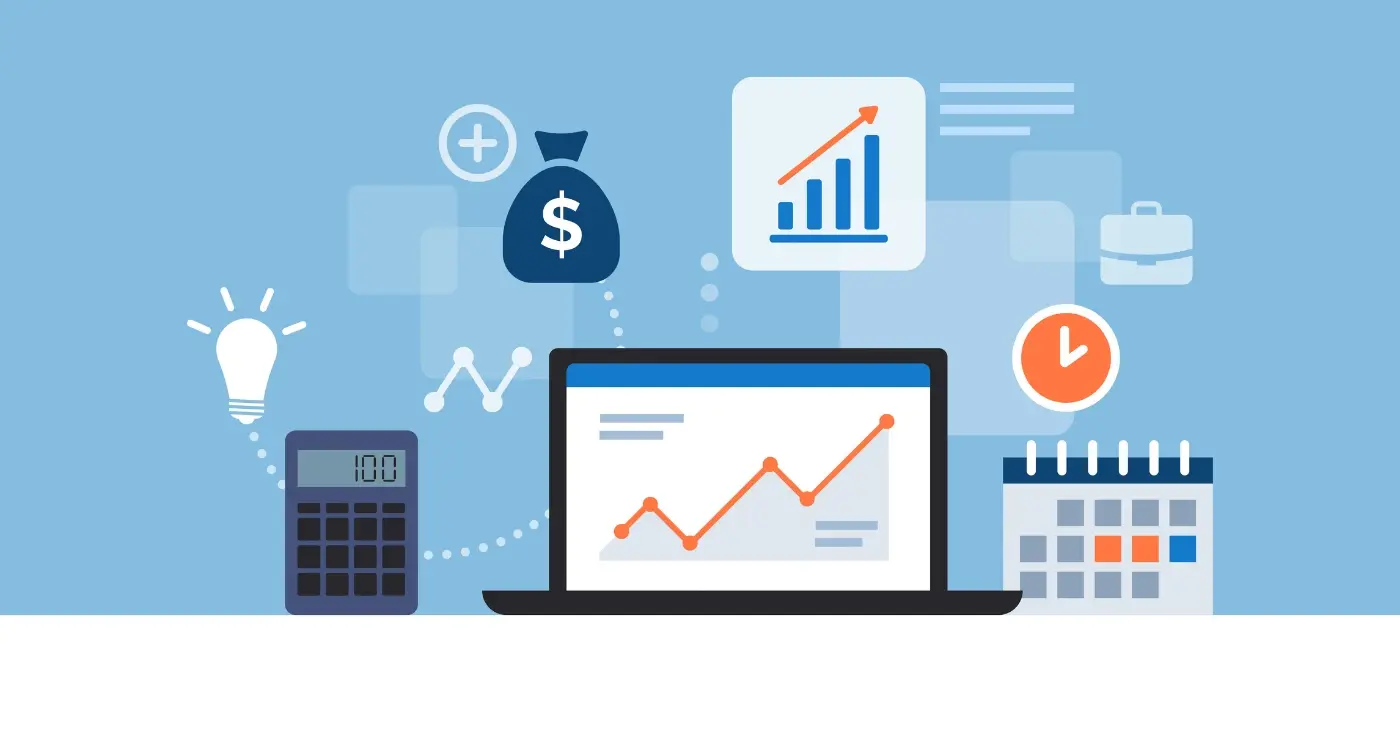How Do I Budget For Unexpected App Maintenance Costs?
Most mobile app owners budget for the build and launch, then cross their fingers and hope for the best. That's a mistake that can cost thousands. Studies show that apps typically require 15-20% of their original development budget annually just for maintenance—and that's before any unexpected surprises hit.
The reality is that launching your app is just the beginning. Your mobile app is like a car; it needs regular servicing, occasional repairs, and sometimes major overhauls. The difference is that with apps, these costs can appear without warning and often at the worst possible moment.
The apps that survive and thrive are the ones whose owners planned for the unexpected from day one
Financial planning for unexpected costs isn't just smart business—it's the difference between an app that scales successfully and one that gets shut down when the first major bill arrives. Whether it's a sudden security patch, compatibility updates for new operating systems, or server crashes during peak usage, these surprises will happen. The question isn't if, but when.
This guide will walk you through the hidden costs that catch most app owners off guard, show you how to build a realistic maintenance budget, and share proven strategies to minimise these unexpected expenses before they can damage your bottom line.
What Are Unexpected App Maintenance Costs?
Right, let's get straight to the point—unexpected app maintenance costs are those sneaky expenses that pop up after your app goes live. I've been in this game long enough to know that every app owner gets caught off guard by at least one of these costs; it's practically a rite of passage!
Think of it this way: you wouldn't buy a car and never expect to change the oil or replace the tyres, would you? Apps work the same way. They need regular care and feeding to stay healthy and functional.
The Main Categories of Surprise Costs
- Emergency bug fixes that can't wait for the next update cycle
- Third-party service price increases (payment processors, analytics tools, cloud storage)
- Operating system updates that break your app's functionality
- Security patches and compliance updates
- Server crashes during peak usage periods
- Legal compliance changes that require immediate code updates
The tricky thing about these costs is that they don't follow a schedule—they happen when they happen. One day your app is running perfectly, the next day Apple releases an iOS update that breaks your login system. That's when you're scrambling to find a developer at short notice, and trust me, emergency fixes don't come cheap!
Most app owners budget for regular maintenance but forget about the unpredictable stuff. That's where the real financial surprises lurk.
Why Apps Need Ongoing Care After Launch
Think of your mobile app like a car—once you drive it off the lot, the real work begins. I've watched countless clients celebrate their app launch only to panic a few months later when they realise their beautiful creation needs constant attention. The truth is, what happens after your app is built is just as important as the development phase itself.
Your app lives in a world that never stops changing. Operating systems update regularly, new devices hit the market, and user expectations shift faster than you can say "iOS update". Each time Apple or Google releases a new version, your app might break, look weird, or simply stop working altogether. This isn't anyone's fault—it's just how technology works.
The Reality of App Maintenance
Here's what your app will need ongoing attention for:
- Bug fixes when users report problems
- Security updates to protect user data
- Performance improvements to keep things running smoothly
- New feature requests from your growing user base
- Compatibility updates for new devices and OS versions
Users won't give your app a second chance if it crashes or feels outdated. They'll simply delete it and move on to your competitor's app. That's why smart financial planning includes setting aside money for these ongoing costs—they're not optional extras, they're part of owning a mobile app.
Budget around 15-20% of your initial development cost annually for basic maintenance. This covers the essentials like bug fixes and OS updates without any major new features.
Common Surprise Expenses That Catch People Off Guard
After launching hundreds of apps over the years, I've noticed that certain costs pop up again and again—and they always seem to catch people by surprise. The thing is, these aren't really surprises at all if you know what to look for.
Server costs are probably the biggest shock. Your app might work perfectly with a few hundred users, but when thousands start downloading it, those hosting bills can skyrocket overnight. I've seen monthly server costs jump from £50 to £500 in a matter of weeks when an app takes off.
The Big Surprise Expenses
- Server and hosting costs when user numbers grow
- Third-party service fees that scale with usage
- Emergency bug fixes that can't wait
- Operating system updates breaking your app
- Security patches and compliance requirements
- Payment processing fees you forgot about
- App store review delays costing you money
Third-party services are another gotcha. That mapping service or payment processor might seem cheap at first, but their pricing tiers can get expensive fast. Security issues can't be ignored either—when a vulnerability is discovered, you need to fix it immediately, not when it's convenient for your budget.
The apps that handle these surprises best are the ones that plan for them from day one. Smart budgeting means expecting the unexpected.
How Much Should You Set Aside For App Maintenance?
Right, let's talk numbers—something most people don't want to hear but absolutely need to know. After working on countless mobile app projects, I've seen businesses get caught completely off guard by maintenance costs. The golden rule? Set aside 15-20% of your original development budget each year for ongoing maintenance and unexpected costs.
Now, that might sound like a lot, but hear me out. If you spent £50,000 building your app, you should budget roughly £7,500-£10,000 annually for maintenance. This covers everything from security updates to bug fixes, server costs, and those surprise expenses that pop up when you least expect them.
Breaking Down Your Financial Planning
Your maintenance budget should cover three main areas: regular updates (about 60% of your budget), security patches (25%), and emergency fixes (15%). The emergency portion is what saves you from panic when something breaks at 2am on a Sunday.
The apps that survive long-term are the ones with owners who understand that launch day is just the beginning, not the finish line
Smart financial planning means treating your mobile app like a car—it needs regular servicing to keep running smoothly. Some months you'll spend nothing extra; others might require a significant investment. The key is having that buffer ready so unexpected costs don't derail your entire business plan.
Building A Smart Budget That Won't Break
Right, let's talk about creating a maintenance budget that actually works in the real world. After dealing with countless client budgets over the years, I can tell you that the biggest mistake people make is treating their maintenance budget like a guess rather than a proper plan.
Start with your annual revenue projections—if you're expecting your app to make £50,000 this year, your maintenance budget should be around £7,500 to £12,500. That's roughly 15-25% of your expected income. I know it sounds like a lot, but trust me on this one.
The Three-Bucket Approach
Here's how I recommend splitting your maintenance budget:
- 50% for regular updates and bug fixes
- 30% for unexpected security patches and urgent fixes
- 20% for new features that users actually request
Don't put all your money into one big pot and hope for the best. Separate accounts work brilliantly here—you can't accidentally spend your emergency fund on a fancy new feature that way.
Monthly vs Annual Planning
Set aside money monthly, not yearly. Put £500 away each month rather than trying to find £6,000 all at once when something breaks. Your future self will thank you when that critical server update hits and you're not scrambling to find cash.
Ways To Reduce Unexpected Costs Before They Hit
The best way to handle unexpected costs is to stop them happening in the first place. I know that sounds obvious, but you'd be surprised how many people skip this step and just hope for the best. Planning ahead isn't just about setting money aside—it's about making smart choices during development that save you headaches later.
Start by choosing the right technology stack. Some frameworks and programming languages are easier to maintain than others. Native development might cost more upfront, but it often leads to fewer compatibility issues down the road. Cross-platform solutions can be brilliant for budget-conscious projects, but make sure your development team knows them inside and out.
Always ask your development team about long-term maintenance costs during the planning stage. A good agency will be honest about potential future expenses rather than just telling you what you want to hear.
Smart Development Practices
Quality code is your best friend when it comes to preventing surprise costs. Rushing through development to save money now often leads to expensive fixes later. Here's what makes a difference:
- Proper testing at every stage of development
- Clean, well-documented code that other developers can understand
- Regular code reviews and quality checks
- Building with scalability in mind from day one
- Using established, well-supported libraries and frameworks
Choose Your Partners Wisely
Working with experienced developers who understand how to handle app updates and maintenance isn't just about getting a good product—it's about financial planning too. They'll spot potential problems early and suggest solutions that prevent costly emergency fixes. The cheapest quote isn't always the best value if it leads to bigger expenses later.
Conclusion
Planning for unexpected app maintenance costs doesn't have to be scary—it just needs to be realistic. I've seen too many brilliant apps fail not because they weren't good enough, but because their creators ran out of money to keep them running properly. The truth is, budgeting for the unexpected is one of the smartest things you can do as an app owner.
Setting aside 20-30% of your initial development budget each year for maintenance isn't being pessimistic—it's being prepared. Things will go wrong, platforms will change, and users will demand new features. That's not a failure of planning; that's just how technology works.
The key is building relationships with reliable developers, keeping your code clean from day one, and having honest conversations about costs upfront. Don't wait until something breaks to start thinking about maintenance. By then it's often too late and much more expensive to fix.
Your app is an investment, not a one-time purchase. Treat it like one and you'll save yourself a lot of stress (and money) down the road. Start planning your maintenance budget today—your future self will thank you for it.
Share this
Subscribe To Our Learning Centre
You May Also Like
These Related Guides

How Much Does It Cost To Build An Enterprise Mobile App?

How Much Does It Cost To Build An Apple Watch App?



